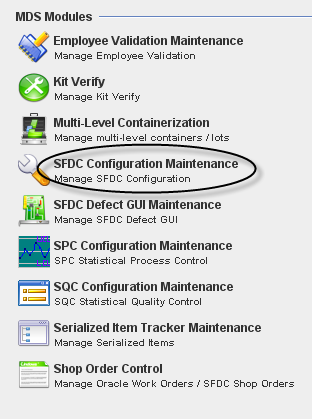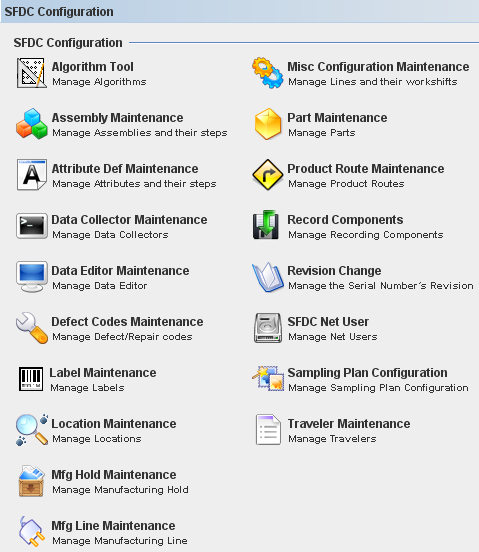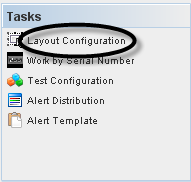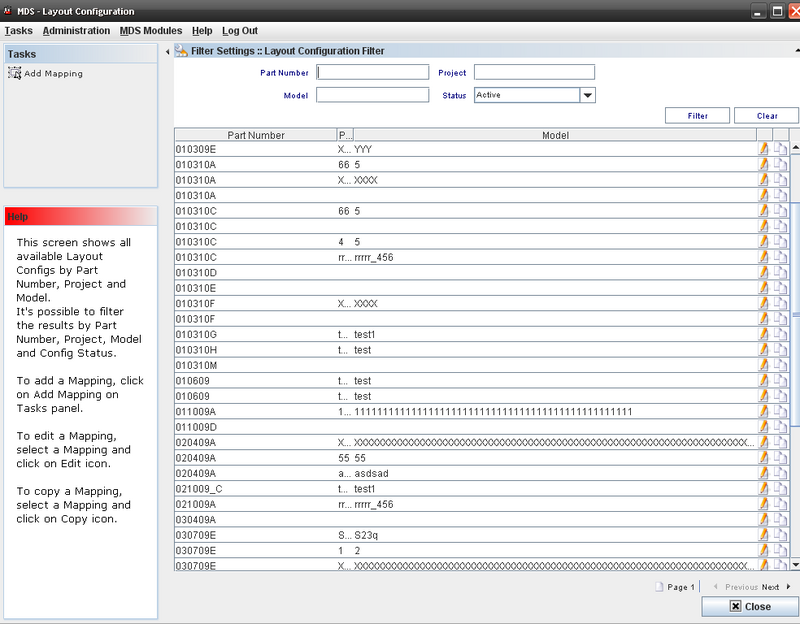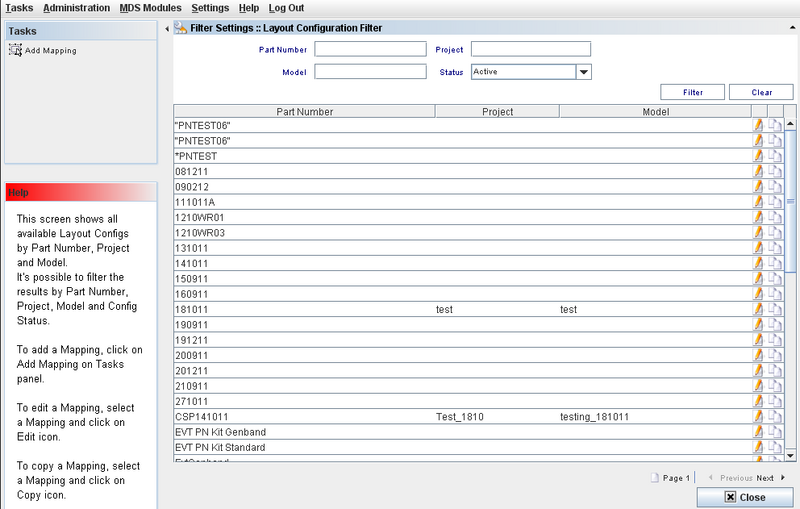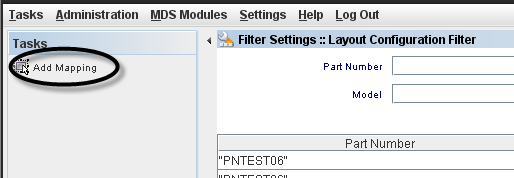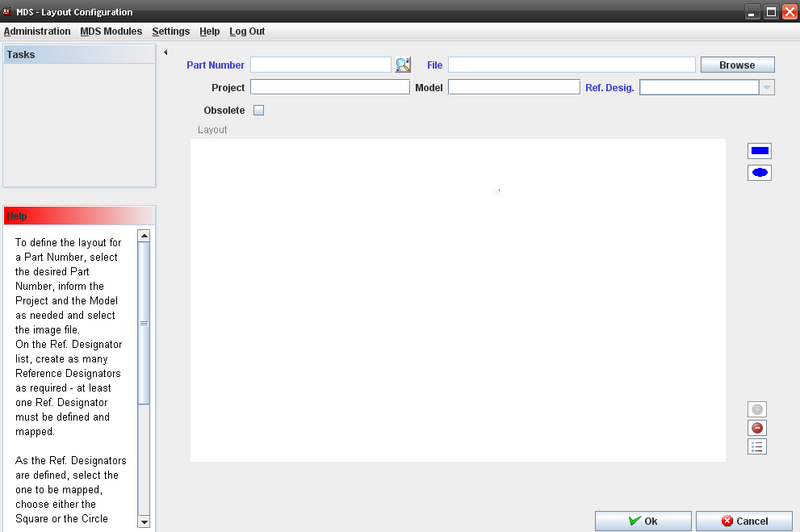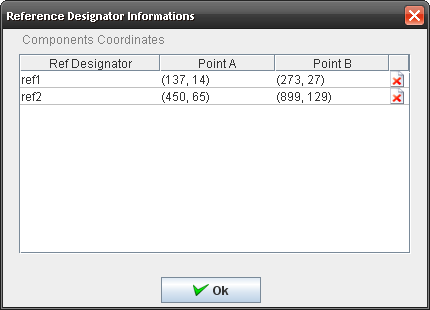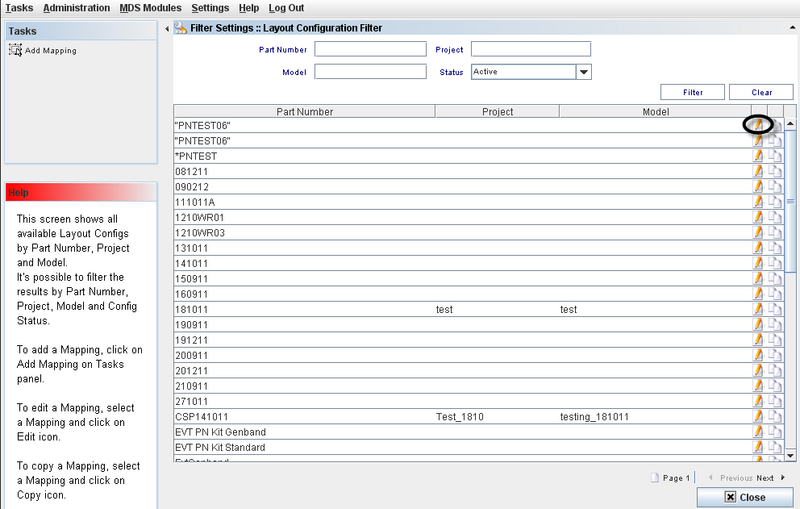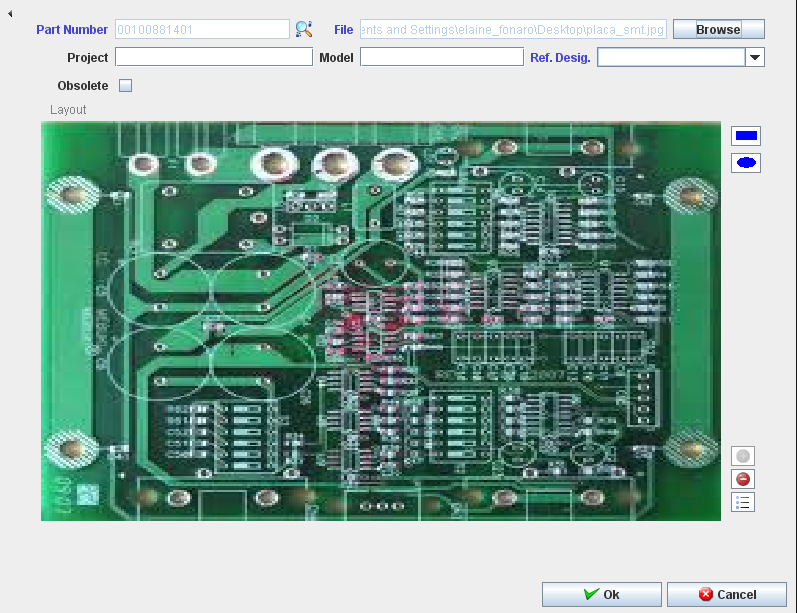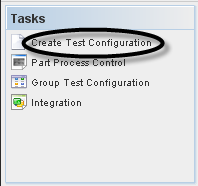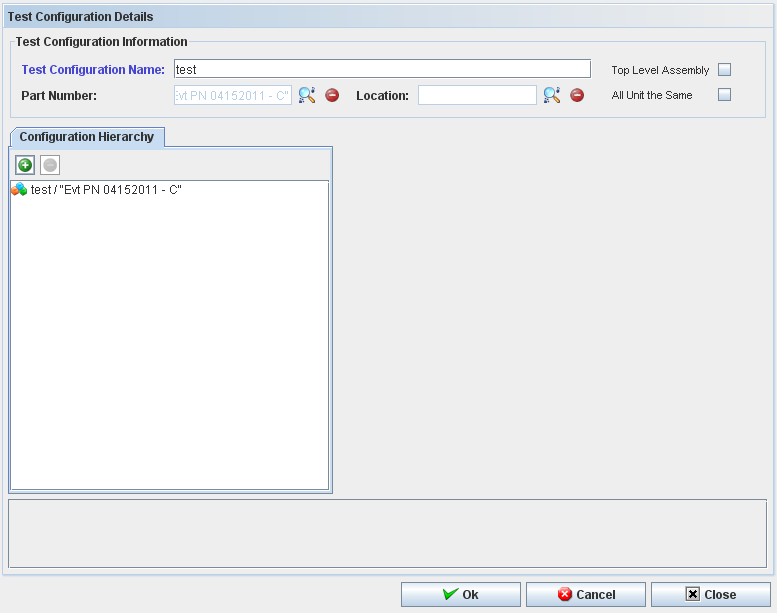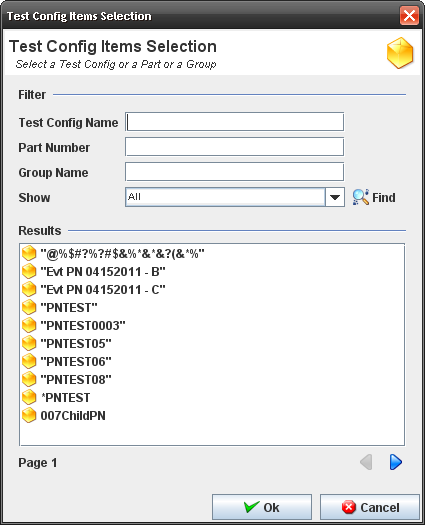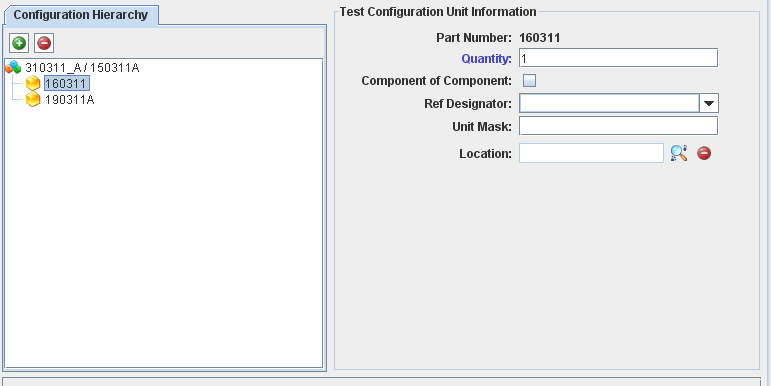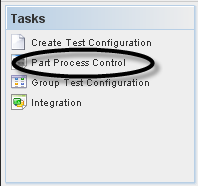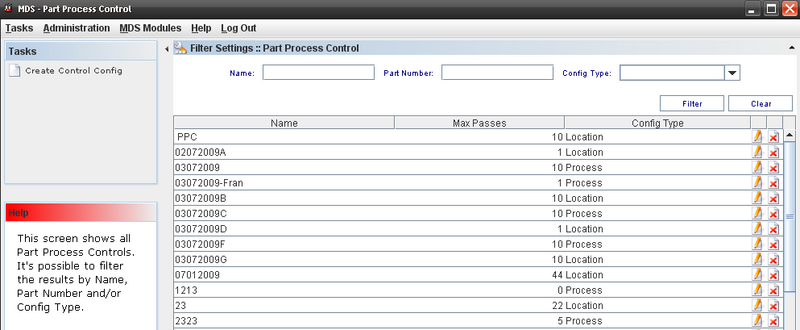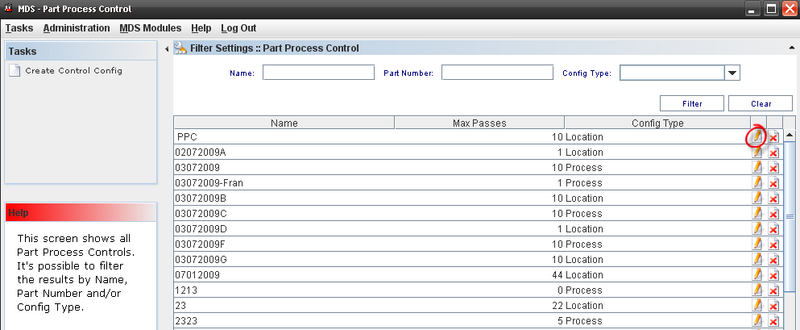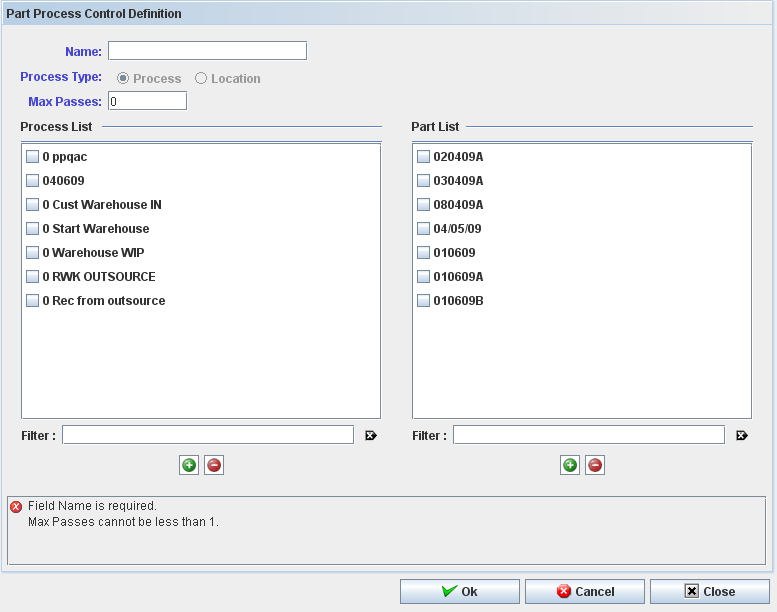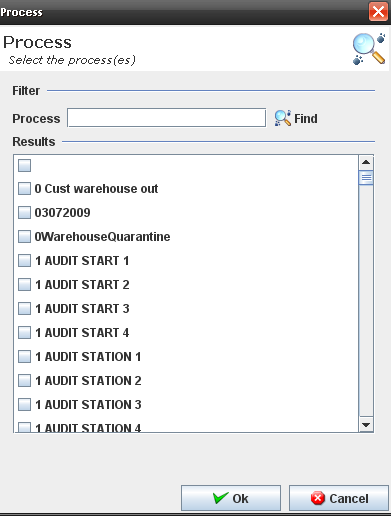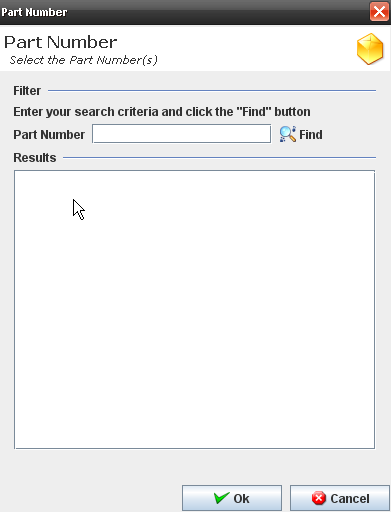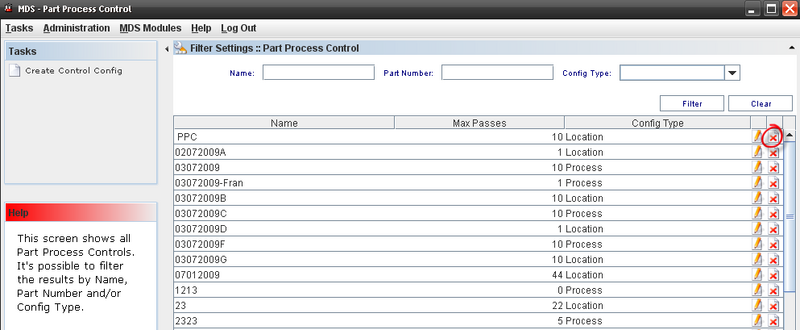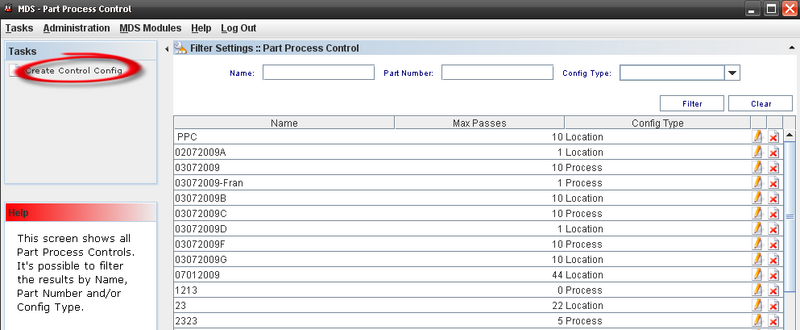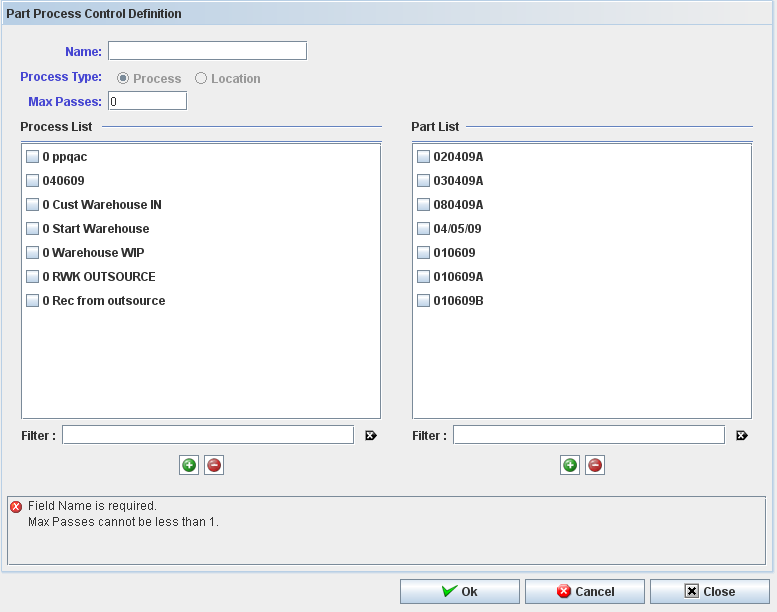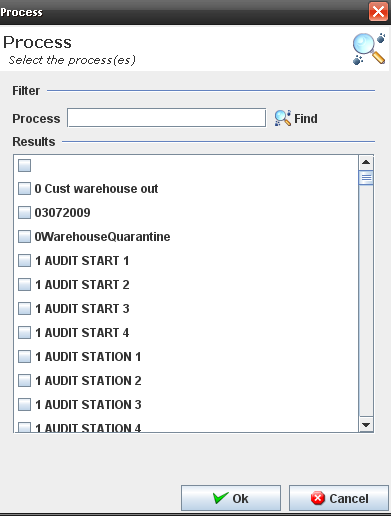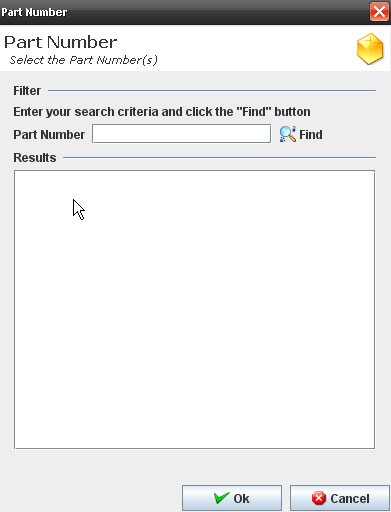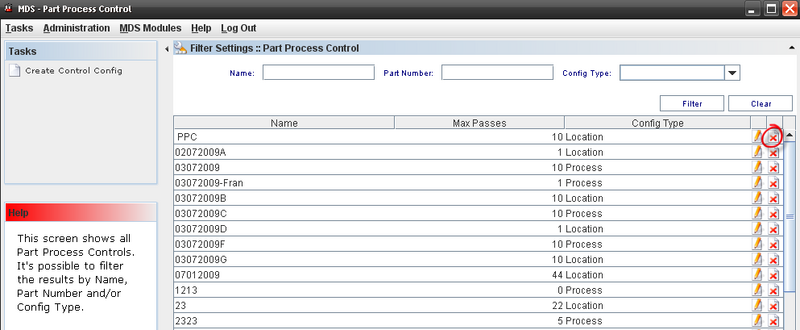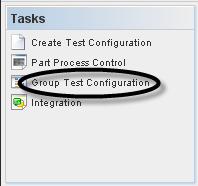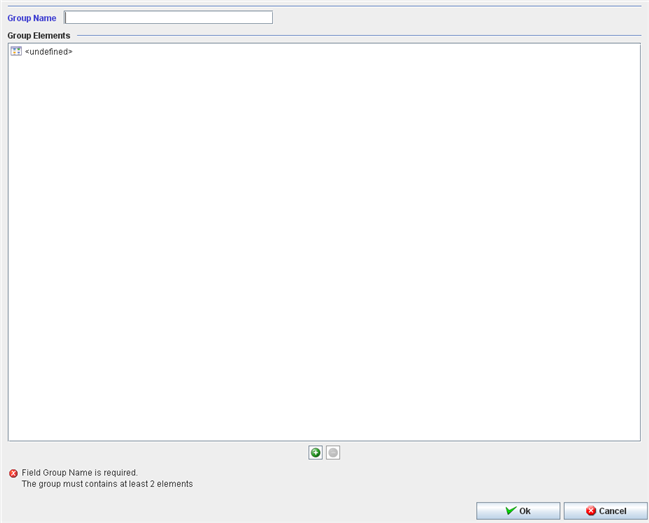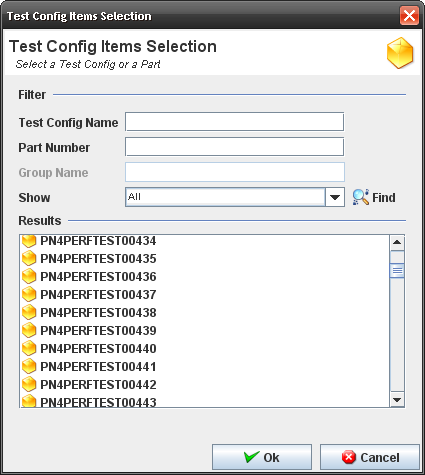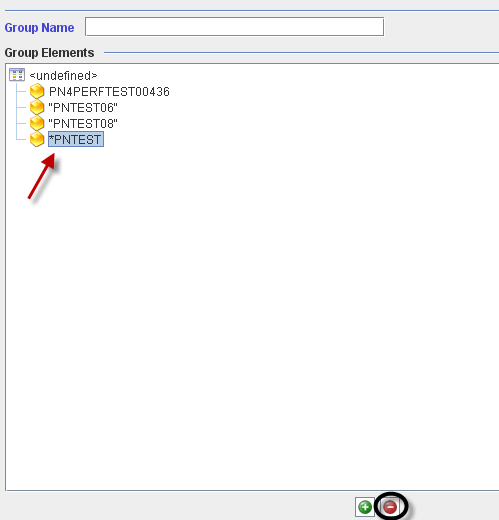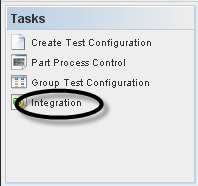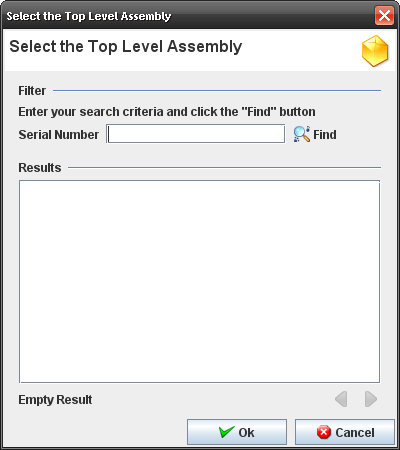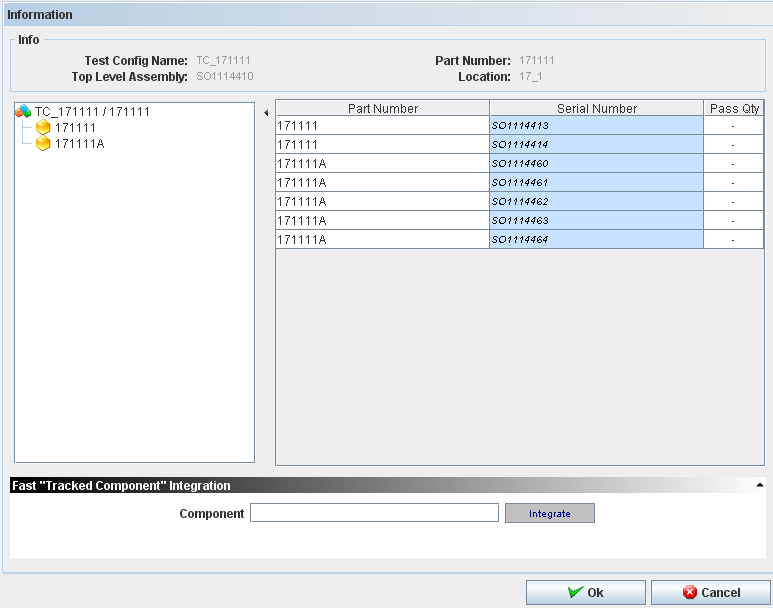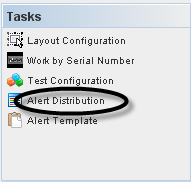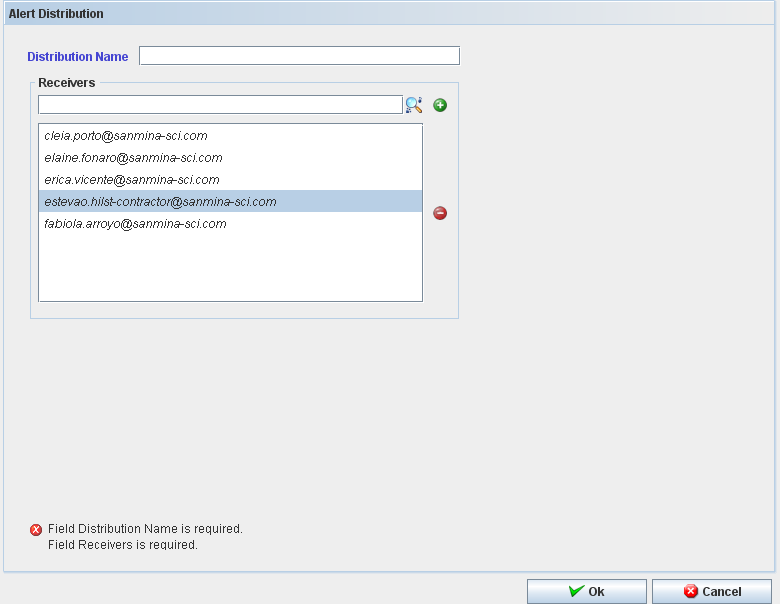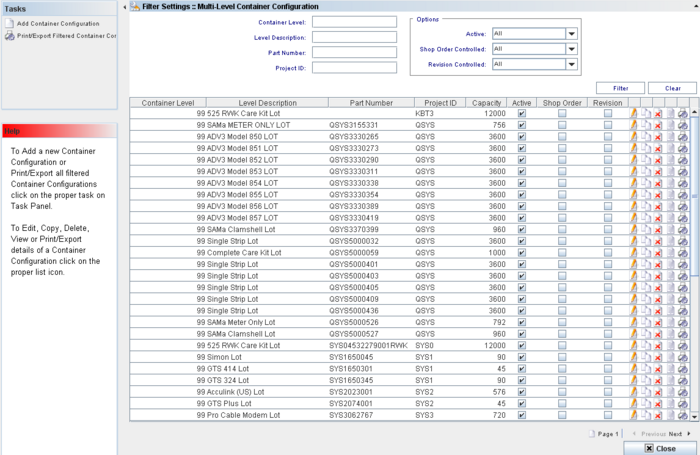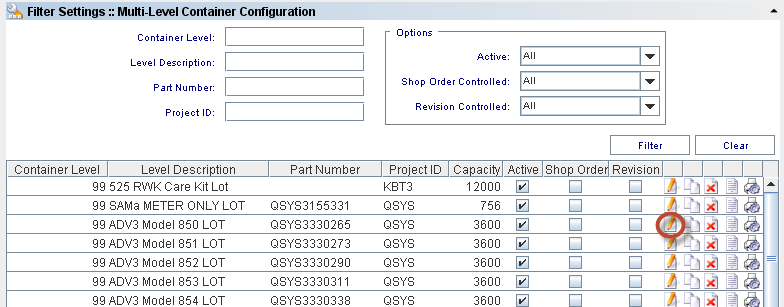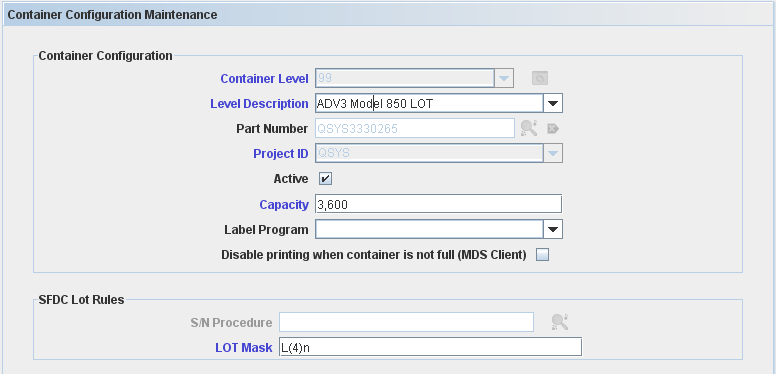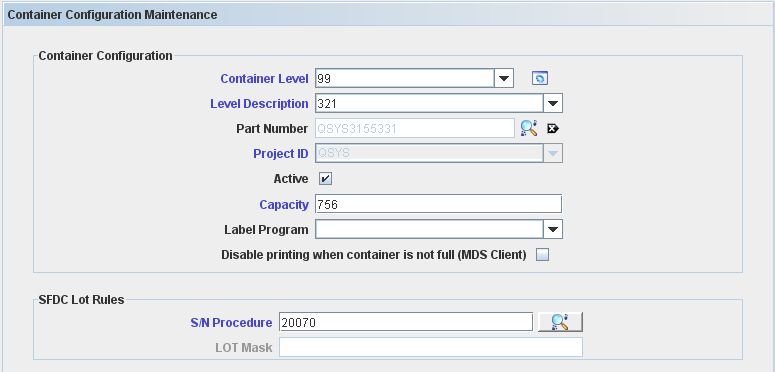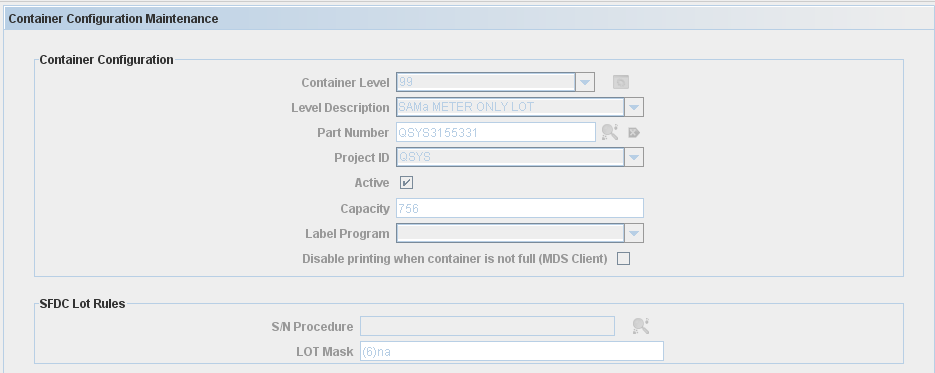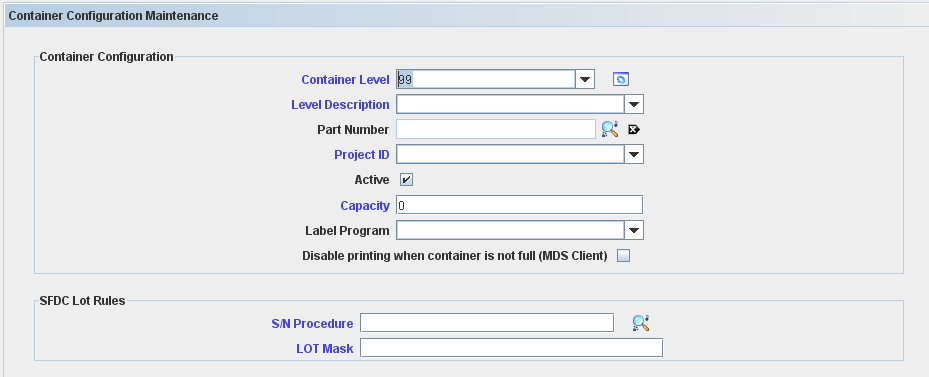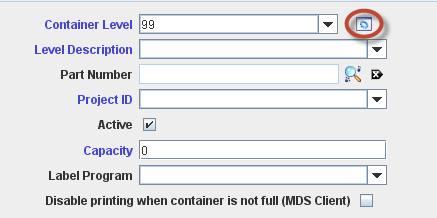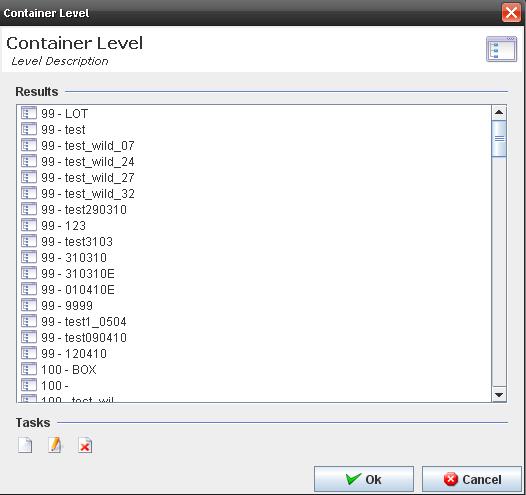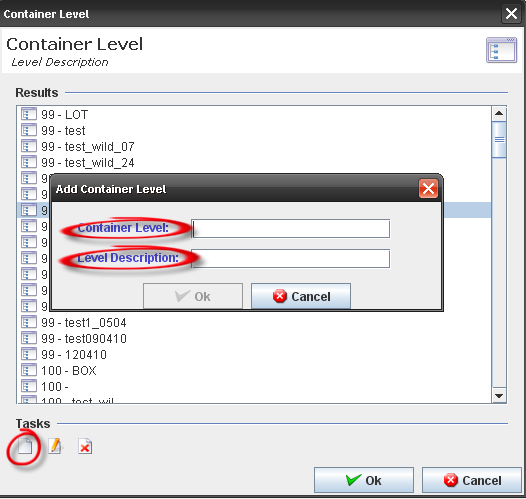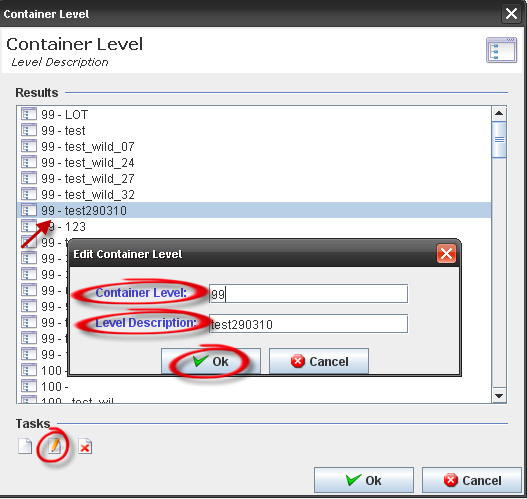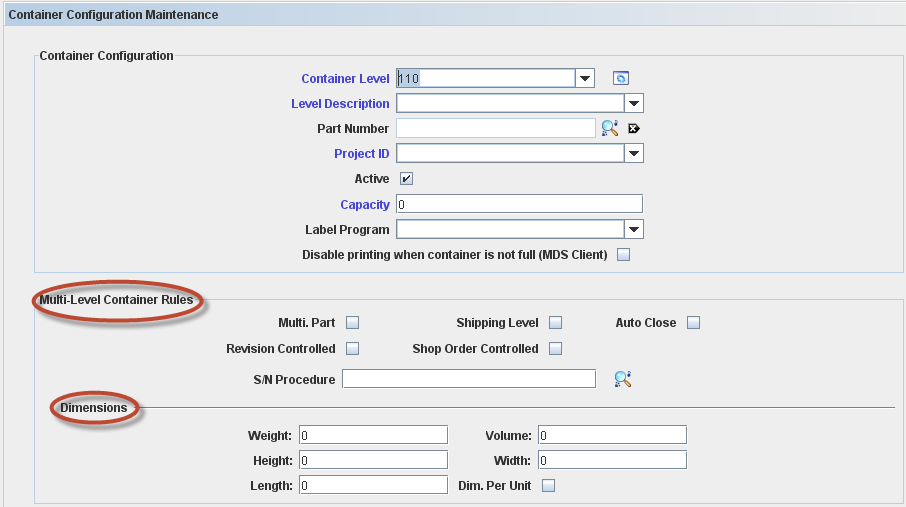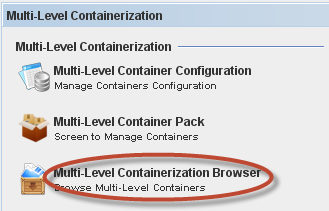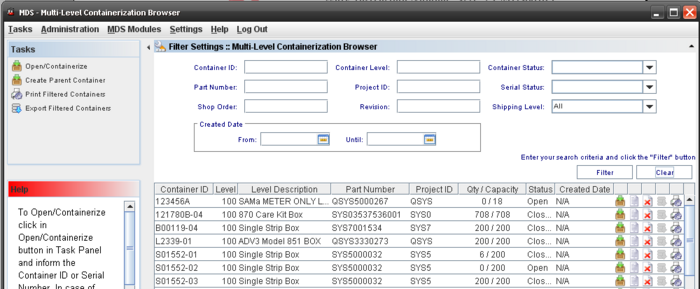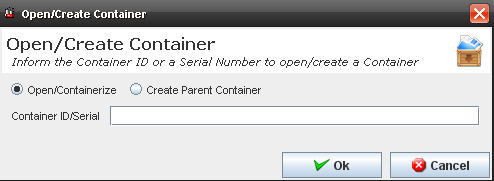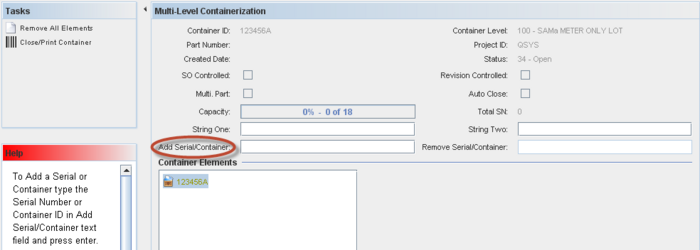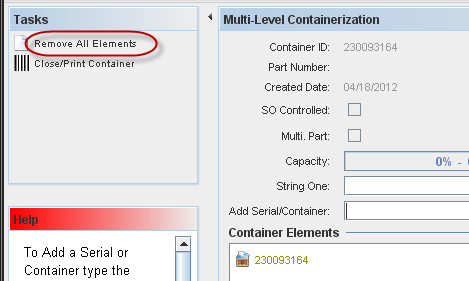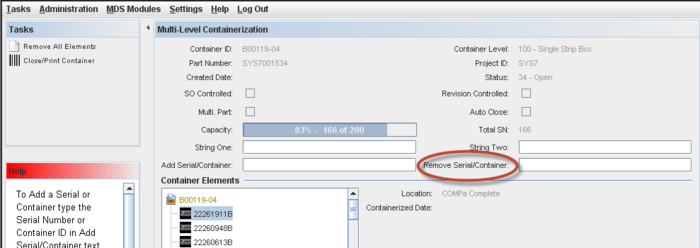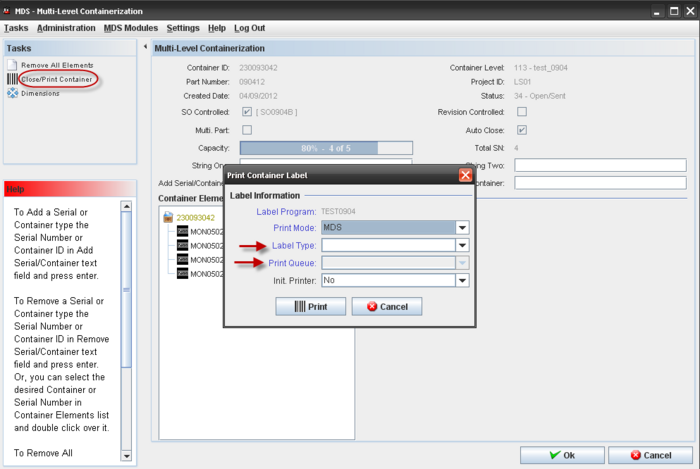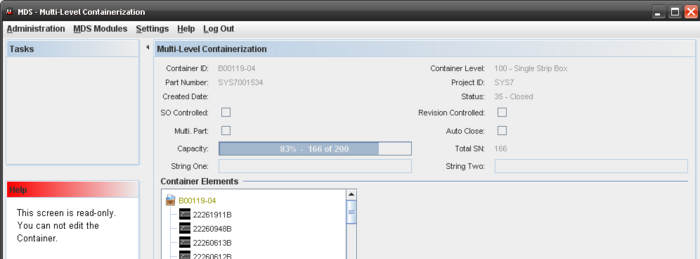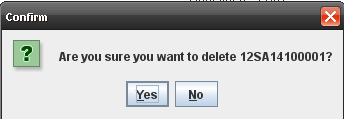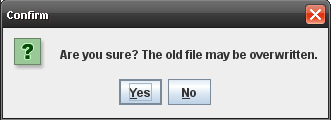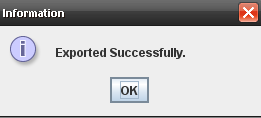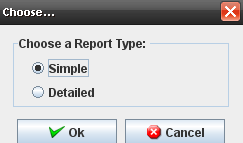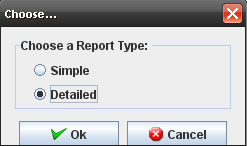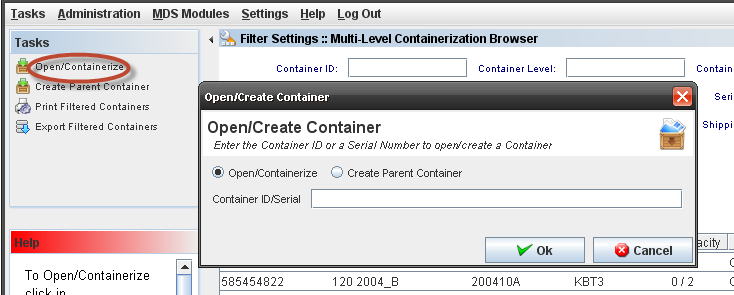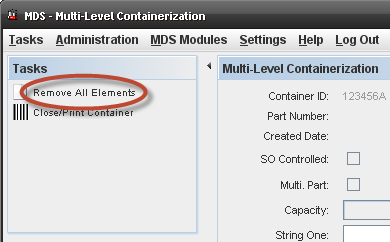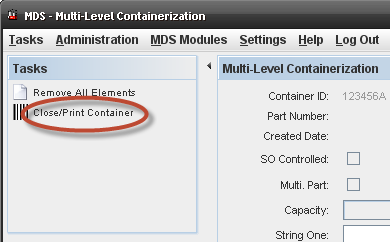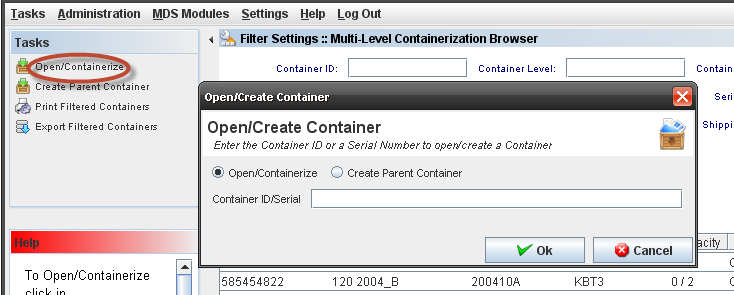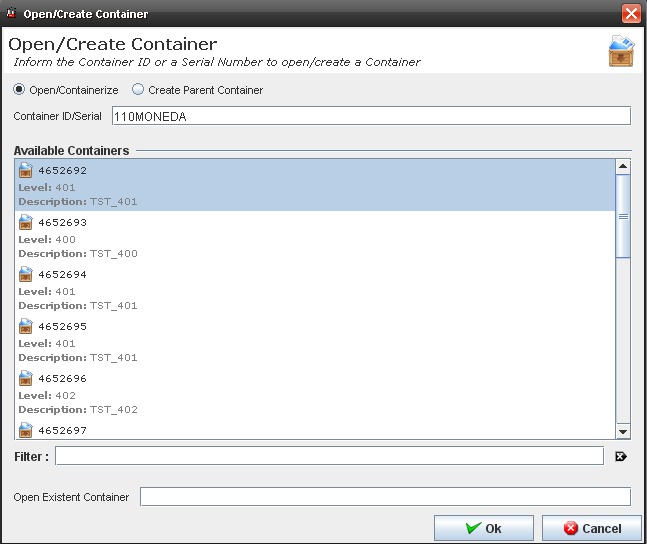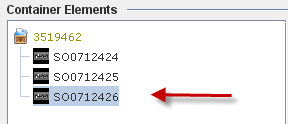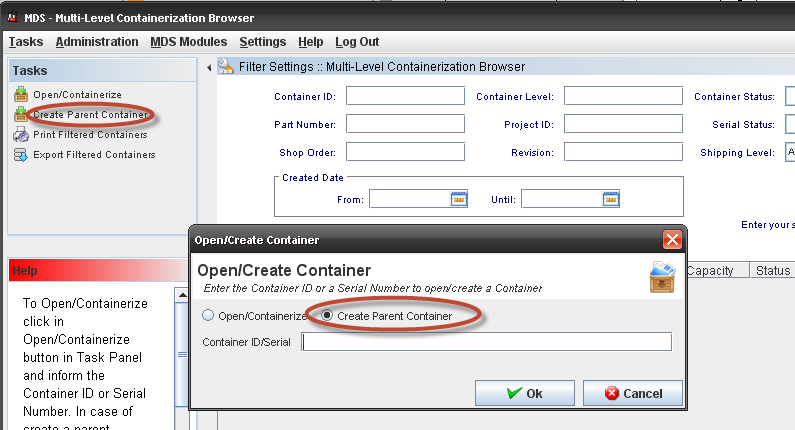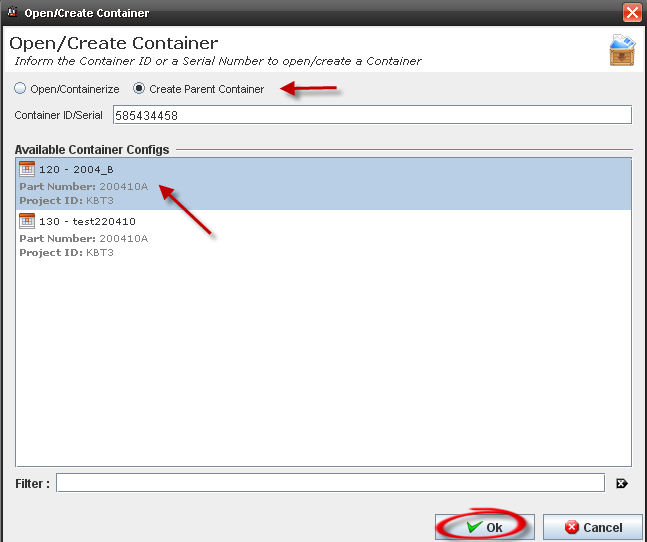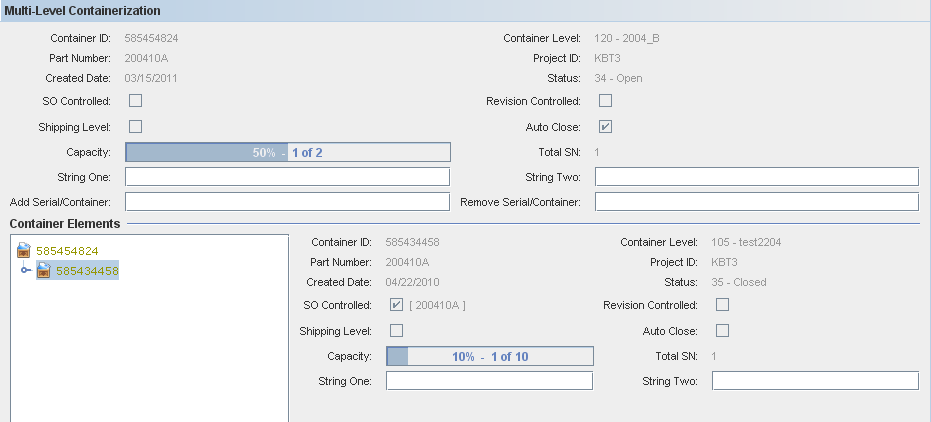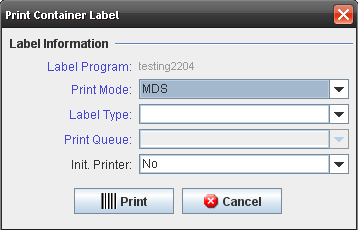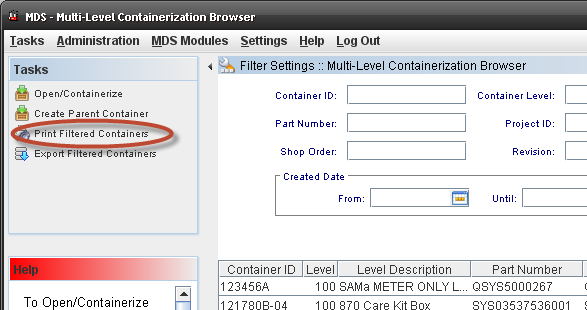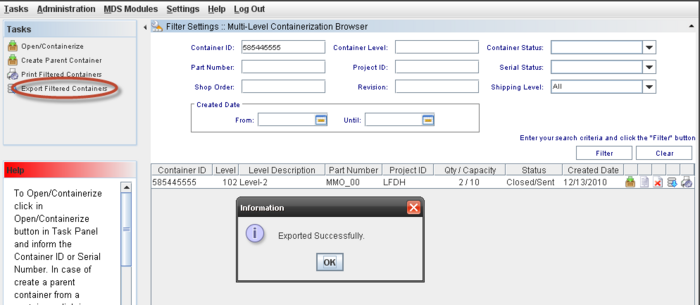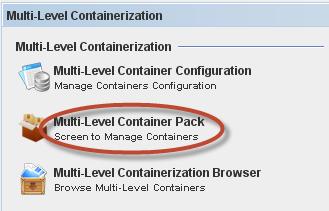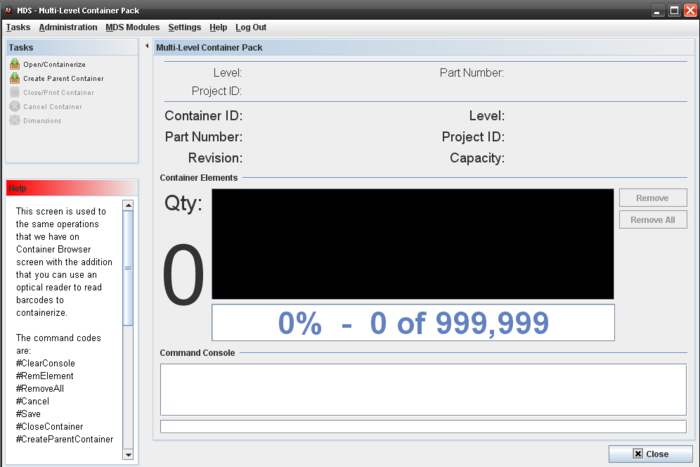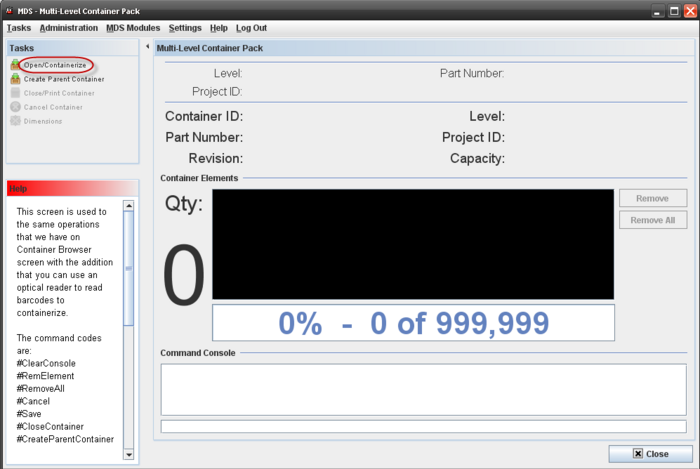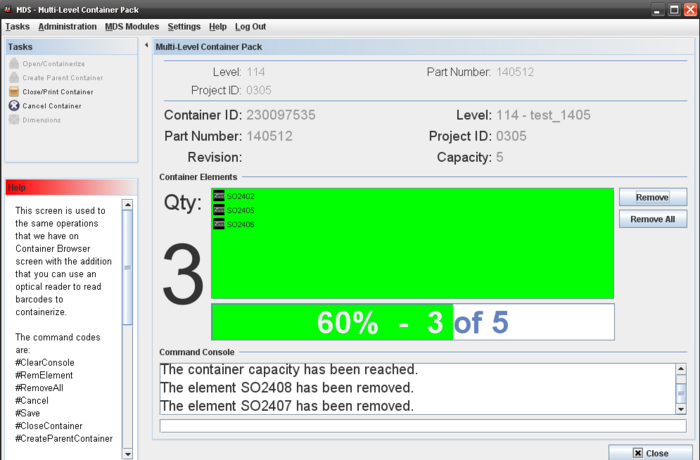Difference between revisions of "Configuration"
Dane parker (talk | contribs) |
Dane parker (talk | contribs) |
||
| Line 625: | Line 625: | ||
* The user Profile defines what the user can access. | * The user Profile defines what the user can access. | ||
| − | |||
'''Figure 3: Multi-Level Container Configuration''' | '''Figure 3: Multi-Level Container Configuration''' | ||
| Line 890: | Line 889: | ||
| − | The user can perform some actions (print, save, fit page…) by clicking on the buttons in the top of the report. | + | The user can perform some actions (print, save, fit page…) by clicking on the buttons in the top of the report. |
== Multi-Level Containerization Browser == | == Multi-Level Containerization Browser == | ||
Revision as of 18:41, 20 January 2014
Contents
- 1 SFDC Configuration
- 2 Kit Verify Configuration
- 3 Multi-Level Container Configuration
- 3.1 Container List
- 3.2 Filter Settings
- 3.3 Edit Container Configuration
- 3.4 Copy Container Configuration
- 3.5 Delete Container Configuration
- 3.6 View Container Configuration
- 3.7 Print/Export Container Configuration
- 3.8 Container Task Panel
- 3.9 Create Container Configuration: Level 99 (LOT) /Level 100 (Container)
- 3.10 Create Multi-Level Configuration Containers: Type > 100
- 3.11 Print/Export All Filtered Container Configuration
- 4 Multi-Level Containerization Browser
- 5 Container Task Panel
- 5.1 Containerize – Opening a Container
- 5.2 b Containerize – Creating a New Container
- 5.3 Create Parent Containers
- 5.4 Print Export Filtered Containers
- 5.5 Export Filtered Containers
- 5.6 Multi-Level Container Pack
- 5.7 Accessing the Multi-Level Container Pack
- 5.8 Open/Containerize
- 5.9 Close/Print Container
- 5.10 Create Parent Container
- 5.11 Cancel Containers
- 5.12 Dimensions
- 6 Employee Validation
- 7 SQC Configuration
- 8 Labor Tracking Maintenance
- 9 Algorithm Tool
- 10 MDS Labels
SFDC Configuration
1. To access the SFDC Configuration module, click on SFDC Configuration in the main MDS Modules window.
Figure 1: MDS Client Modules – SFDC Configuration Maintenance
GENERAL NOTES: a)A user only has access to the modules assigned to his/her profile. Profile permissions are granted in the MDS PRAC (Program Access Control) Module by the Program Admin user.
b)Any/all reports printed from jMDS modules will print to the default printer for the workstation.
2. The SFDC Configuration main window is displayed.
Figure 2: SFDC Configuration Modules
This is the main SFDC Configuration Module window.
Kit Verify Configuration
The Kit Verify consolidates or validates all of component that we have in a “Kit” that warehouse give to the floor versus the shop order, in order to know if we have missing component in the Kit.
This module is integrated to MDS Client Application and will be available to all Sanmina's Plants.
Layout Configuration
The function of this interface is to allow the user to Add, Copy or Edit an assembly layout in the Kit Verify MDS Database.
Note 1: If Oracle does not send the reference Designator information to MDS the system will allow entering it manually.
To access the Layout functionality, click on Layout Configuration at Tasks panel.
Figure 4: Choose Layout Configuration
The Layout main window displays:
Figure 5: Layout Configuration Main Window
This screen will display all available Layout Configurations by Part Number, Project and Model.
Layout Configuration List
This screen displays all Layouts available and the user can edit or use the copy function.
Figure 6: Layout Configuration Filter
Adding a Mapping (Layout configuration)
To create a Control Config, the user must to click onCreate Control Config on Tasks panel.
Figure 7: Add Mapping from Tasks panel
The Layout Configuration screen displays:
Figure 8: Layout Configuration screen
Note1: at least one Ref. Designator must be defined and mapped.
Fields that User can enter/select:
- Part Number;
- File
- Project;
- Model;
- Reference Designator;
- Browse to find the layout file;
Follow the steps below to define a layout for a part number:
- Select the desired Part Number; inform the Project and the Model as needed.
- Click on the “Browse” button to select the new assembly layout. The system will show the File Dialog window and the user can select the image. The system disables the button and the path text box and the image will appear in the layout box;
- On the Ref. Designator list, the user must to create as many Reference Designators as required which will then automatically appear as disabled;
- The user has to click in Square orCircle form Button and draw a Square or Rectangle in Layout;
- Click on the Add “+” button.
- At the same time a new row with the reference designator information will appear in the “UI control” box with the following variables:
Figure 9: Components Designator
To view the Reference Designator Information, click on the View button in the Layout Configuration window.
a.X coordinate;
b.Y coordinate;
c.Width;
d.Height;
- To delete the component, click on Delete icon.
- After adding all reference designators the user has to click on the “OK” button and the system will insert all these rows into the MDS Database;
Editing a Layout Configuration
Figure 10: Edit Layout configuration
To edit a Mapping, the user must to select a Mapping and click on Edit icon.
The Layout Configuration window displays with the existing layout information.
Figure 11: Layout Configuration
Note that the following fields can not be updated:
- Part Number
- Layout
- Project
- Model.
The Ref Designator can be removed from the list or included in the list.
To obsolete a configuration, check the Obsolete box.
Copying a Layout Configuration (mapping)
This option allows the user to create a new layout based on a pre existing layout (this module allows the user to copy and modify an existing assembly layout).
Follow the steps bellow to copy a layout:
- The user must create a new relation between the project and the model;
- Select the layout in the list and click the “Copy” button;
- The image will appear in the layout box, and all records will appear in the “UI control” grid;
- Select the part number that will have the layout chosen;
- In case the user wants to change any reference designator he/she has to select it on the assembly layout and the reference designator row that was selected will appear in the “UI control” grid.;
- Once the modification has been finished, the user has to click onOK button;
The system updates the information into the MDS database.
Test Configuration
Figure 25: Test Configuration window
This screen shows all Test Configurations.
Performing Searches
To perform searches, there are there are just one field available:
Filters Fields:
- Part Number;
- Test Configuration Name
- Top Level Assembly
- Location
Enter the information and click on Filter.
To clear the filter fields, click on Clear.
Adding/Editing Test Configuration;
See bellow the Add/Edit steps.
1. To add a Test Config, the user must to click on Add Test Config on Tasks panel.
Figure 26: Create Test Configuration
2. To edit or delete a Test Config, the user must to select the config in Test Config List and click on Edit or Delete icon.
3. Click on Create Test Configuration in the Tasks Panel. The Create Test Configuration window displays.
Figure 27: Test Configuration Details
To add a test configuration, the user must to follow the following steps:
1. To create or edit a test configuration it's required to inform the top level Part Number.
2. To add a part number, a test configuration or a test configuration group to the test configuration, click on the "+" icon.
3. The Test Configuration Items Selection popup displays.
Figure 28: Test Config Items Selection
4. The user must enter a search item (your criteria: Part Number only, a Test Configuration Group or a Test Configuration only) and click on Find.
5. Double click on the result.
6. Fill mandatory fields (part number and quantity) in "Test Configuration Unit Information".
Figure 29: Test Configuration Details
7. Click on Ok button.
Note1: Obsolete Part Numbers do not display. The Part Number chosen will display in "Configuration Hierarchy".
The user can see the "Test Configuration Selection" window with "Test Configuration", "Part Number" and "Test Config Group"
Note2: It's possible to add more than one Test Configuration, Part Number or Test Config Group to create a Test Configuration.
8. The information is saved in the database.
9. The "Test Configuration" window closes and the Test Configuration created is displayed.
10. To delete a part number, a test configuration or a test configuration group from the control configuration, the user must select the item and click on the "-" icon.
Part Process Control;
To manage Part Process Control, the user must to click on Part Process Control on Tasks panel.
Figure 30: Selecting Part Process Control
The Part Process control Window displays.
Figure 31: Part Process Control
This screen displays all Part Process Control available.
Editing or Deleting from Part Process Control List
Figure 32: Editing a configuration from Part Process Control List
To Edit a Control Config, the user must to click on edit icon in the list.
The edit page displays:
Figure 33: Part Process Control definition
Toupdate a part process control config it is required that the user type a unique name, the config type (process or location) and the max passes.
Note: All items of the control must be of the same type: process OR location.
At least one process or one location is required; the part number list is optional information.
To add a process or a location to the control config:
1. Click on the "+" icon below Process/Location list.
2. The Process popup displays:
Figure 34: Process Popup
3. Execute the filer to select an available process.
4. Click on OK button.
5. The selected process must display at the process list.
To delete a process or a location from the control config, select the process or location and click on the "-" icon below Process/Location list.
Click on Ok to confirm.
To add a part number to the control config, the steps are the same to add process:
1. Click on the "+" icon belowPart list.
2. The part Popup displays:
Figure 35: Part Number dialog
3. Execute the filer to select an available part number.
4. Click on OK button.
The selected part must display at the process list.
Figure 36: Deleting from Part Process Control List
To delete a Control Config, select the control and click on Delete icon in the main Part Process Control list window.
Click on Ok to confirm.
Creating a Control Configuration
To create a Control Config, the user must to click onCreate Control Config on Tasks panel.
Figure 37: Create a Control Config
The Part Process Control Definition displays:
Figure 38: Part Process Control Definition
To create or edit a part process control config it is required to the user informs:
- Name;
- Config Type and
- Max Passes.
Note: All items of the control must be of the same type: process OR location.
At least one process or one location is required; the part number list is optional information.
To add a process or a location to the control config:
1. Click on the "+" icon below Process/Location list.
2. The process Popup displays:
Figure 39: Process Popup
3. Execute the filer to select an available process.
4. Click on OK button.
5. The selected process must display at the process list.
To delete a process or a location from the control config, select the process or location and click on the "-" icon below Process/Location list and click on Ok to confirm.
To add a part number to the control config, the steps are the same to add process:
1. Click on the "+" icon below Part list.
The part Popup displays:
Figure 40: Part Number
2. Execute the filer to select an available part number. 3. Click on OK button. 4. The selected part must display at the process list.
To delete a part number from the control config, select the part number and click on the "-" icon below Part list.
Figure 41: Deleting Control Config from Part Process Control List
To delete a Control Config, select the control and click on Delete icon in the main Part Process Control list window and click on Ok to confirm.
Group Test Configuration;
To manage Groups Test Config, the user must to click on Group Test Configuration on Tasks panel.
Figure 42: Test Configuration
To access the Group Test Config, click on Group Test Configuration in the Tasks panel.
Figure 43: Group Test Configuration List Filter
Sorting Colum
The application allows to sort all columns of the list (ascending or descending), including the multi-column sorting keeping the "control" key pressed.
Adding a Test Config Group
Figure 44: Adding Test Config Group
To add a Group, click on Add Test Config Group on Tasks panel.
The Test Config Group window displays:
Figure 45: Adding Test Config Group
To create or edit a test config will be required to the user informs:
- Group Name;
To create or edit a test config group it will be required to the user to inform a unique group name.
All items of the group must be of the same type: test config OR part number.
To add a test config or a part number to the group:
1. Enter the new group name and click on the "+" icon.
2. The Test Config Items popup displays:
Figure 46: Config Items Popup
3. Execute the filter to select an available Test Config or part number.
4. Click on OK button.
5. The selected test config or part number must display at the group name element list.
To delete a test config or a part number from the group, the user must to select the test config or the part number and click on the "-" icon.
Figure 47: Deleting Group Elements
Click on Ok to confirm.
Editing a group name.
Figure 48: Deleting Group Elements
To edit a group, select the group and click on Edit icon.
The same window to create a group displays. The user is able to change the group name or add/delete part numbers/test groups clicking on “+” icon to add or “-” icon to delete.
For more information, see the topic [#_Adding_a_Test 2.8.4.2 - Adding a Test Config Group].
Deleting a group name.
Figure 49: Deleting Group Names
To delete a Group, select the group and click on Delete icon.
Click on Ok to confirm.
Integration
To integrate a Top Assembly, scan or type the Component Serial Number according to the requested Ref. Designator.
To integrate a Test Config, the user must to click on Integration on Tasks panel.
Figure 50: Test Configuration - Integration
Finding Top Assemblies to Integrate
When the user clicks on "Integration" from Tasks panel, the screen to find and select the top assembly to integrate components is displayed.
Figure 51: Select the Top Assembly
Follow the steps below:
- Go to Kit Verify Test Configuration Integration, leave the Serial Number field empty or enter a S/N and click on Filter.
Note: Only top assembly serial numbers in status >=20 which have a test configuration created for the main part number must be displayed. The paginator buttons (previous and next) are displayed and 10 serial numbers are displayed per page.
Showing Integration Information
Figure 52: Integration Information
Follow the steps below:
- Go to Kit Verify Test Configuration Integration, fill the Serial Number field with the top assembly;
- Double click on top assembly;
- The test configuration tree view which was created for the main part number is displayed and beside that the components to integrate to the serial numbers are displayed;
- Click on Serial Number for the related part number, fill with one of the serial numbers created according to the pre condition 2 and press enter;
- The serial number is recorded to the part number and the application points to the next serial number to be filled;
- Repeat the step 3 for the remaining serial numbers and click OK;
- The message "Are you sure you want to create a new component integration?" is displayed.
Alert Distribution
To access the Alert Distribution functionality, from Tasks panel, click on Alert Distribution.
Figure 53: Shop Order List
The alert distribution list should be like a profile. We can select the user for each program and these users will receive an email alert base on xml template.
The Alert Distribution list displays:
Figure 54: Alert Distribution
From this screen, the user is able to add, edit, copy or delete alerts distribution. See the next topics for more information.
Adding Alert Distribution
Figure 55: Adding Alert Distribution
The Add Alert Distribution window displays:
Figure 56: Add Alert Distribution
To add an Alert Distribution, follow the steps bellow:
- In Task Panel click in "Add Alert Distribution" option;
- Fill the mandatory fields (Distribution Name and Receivers);
- Click in "Ok" button;
- Confirm the Alert Distribution creation.
The "Alert Distribution" window closes and the "Alert" is displayed with the recorded "Alert" in the table.
The user can search for receivers. Click on “+” to add or “-” to delete.
Editing Alert Distribution
Figure 57: Editing Alert Distribution.
Follow the steps bellow to edit an alert distribution:
- On the Alert Distribution list, select an existing Alert;
- Click the Edit icon; The Alert Distribution screen displays. It is the same for Add Distribution alert.
- Change the mandatory fields;
- Click "OK" button
- Confirm the Edit.
Copying Alert Distribution
Figure 58: Copying Alert Distribution
The copy feature allows the user to copy alert information. Follow the steps bellow:
- On the Alert Distribution List, select an existing Alert;
- Click the Copy Icon;
- Change the mandatory fields;
- Click "OK" button.
Deleting Alert Distribution
Figure 59: Deleting Alert Distribution
Follow the steps bellow to delete an Alert:
- On the Alert Distribution List, select an existing Alert;
- Click the Delete icon;
- Click "OK" button.
- A confirmation box displays.
- The Alert is deleted.
Multi-Level Container Configuration
This chapter describes how the user manages the Multi-Level Containerization MDS Module. It details all functionalities and actions that can be performed by users.
GENERAL NOTES:
- Most error and informational messages are displayed in a dialog box. Click OK or press Enter to dismiss the dialog window. Yes or No buttons may also be provided to answer questions presented by the message dialog window.
- The user Profile defines what the user can access.
Figure 3: Multi-Level Container Configuration
The user is able to perform actions like create, print/export filtered results, edit, copy, delete, view or print/export containers configuration.
The next topics will describe all available Container Configuration functionalities.
Container List
The Container List displays all container levels and allows performing the following actions:
- Filter Data
- Edit a Container Configuration
- Copy a Container Configuration
- View a Container Configuration
- Delete a Container Configuration
- Print/Export details of a Container Configuration.
Note that it is possible to execute two actions from the Task Panel:
- Add a new Container Configuration
- Print/Export all Filtered Container Configurations
Filter Settings
To perform searches, there are four available fields:
Container Level: Predefined container levels are: “99 LOT”, “100 BOX”, “110 SKID” and “120 PALLET”; levels 101-999 are Multi-Level Containers and are handled only by MDS Client.
Level Description: The default description for the level.
Part Number: A number which serves to uniquely identify a part (product).
Project ID: The project identification number.
Also, the user can select additional options from the Options section:
Active (All, No, Yes): NO implies inactive for containerization. Default=YES;
Shop Order controlled (All, No, Yes): YES allows only units from a single shop order to be containerized together. Default=NO;
Revision Controlled (All, No, Yes): YES means only one revision can be containerized together. Please correct and check the default value.
Enter the information or combination of information and click on Find.
Figure 4: Filter Settings
To clear the fields’ contents, click on Clear button to start a new filter.
Edit Container Configuration
To edit a container configuration, go to MDS Client > Multi-Level Containerization > Container Configuration> Container Configuration list, select an existing Container Configuration and click on Edit Icon.
Figure 5: Multi-Level Container Configuration - Edit
The Container Configuration Maintenance screen displays:
Figure 6: Container Configuration Maintenance - Edit
All the container configuration information is updated according to the updates applied and the container configuration is displayed in the container configuration's list.
Container Level, Part Number and Project ID cannot be edited, as they are the keys of the record.
Note: For more details about a field’s description, see the [#_5.1.2a_Create_Container Create Container Configuration] topic.
Copy Container Configuration
To copy Container Configuration definitions, go to Container Configuration> Container Configuration list, select an existing Container Configuration and click on the Copy icon.
The Container Configuration Maintenance window is displayed:
Figure 7: Container Configuration Maintenance - Copy
Change the necessary information and click on the "Ok" button. The new Container configuration created is displayed on Container Configuration List.
Delete Container Configuration
To delete a container configuration, go to Multi-Level Containerization > Container Configuration> Container Configuration list, select an existing Container Configuration and click on Delete Icon.
Figure 8: Multi-Level Container Configuration - Delete
A confirmation message displays. Click on Yes to confirm the deletion or No to cancel. The Container Configuration will be deleted from the containers list.
View Container Configuration
To view the container information, go to Multi-Level Containerization > Container Configuration> Container Configuration list, select an existing Container Configuration and click on the view Icon.
The container configuration maintenance window displays:
Figure 9: View Container Configuration Window
Note: all the fields are read only.
Print/Export Container Configuration
1) To print/export containers, go to Multi-Level Containerization > Container Configuration> Container Configuration list, select an existing Container Configuration and click on the Print/Export Container Configuration Icon.
A report is generated. In the viewer screen, click on "Save" or “Print” button to save or print the report result.
Container Task Panel
From the Task Panel the user is able to create a new container configuration and print/export all filtered container configuration created.
Create Container Configuration: Level 99 (LOT) /Level 100 (Container)
There are different configurations for Containers Level 99 (LOT) and level 100 (Container). See bellow the differences between them.
** Container Level = 99: Configuration
To create a container configuration, go to Multi-Level Containerization > Container Configuration > Task Panel and click on Add Container Configuration.
The Container Configuration Maintenance screen is displayed:
Figure 10: Container Configuration Maintenance
Container Configuration fields description:
Container Level: defines the container level (99 to 999) – default is Empty. For this topic, the level used is 99(LOT). The default Container Levels, 99 - LOT, 100 - CONTAINER, 110 - SKID and 120 - PALLET cannot be edited or deleted, it’s created automatically by the application.
SFDC Lot Rules:
- S/N Procedure: not used when Serial Mask is specified. The field can contain either (i) a predefined program filename or (ii) an algorithm number, if the algorithm was defined using the Algorithm Tool – default Empty;
- Lot Mask: not used when Serial Algorithm Procedure is specified. Up to 30 characters in length. The mask of the serial number for the container or lot. Using a serial mask, container serialization schemes can be different per part number – default Empty;
To manage the container levels click on Manage icon:
Figure 11: Container configuration Maintenance
The Manage Level screen is displayed:
Figure 12: Container Level Maintenance
The user is able to Add, Edit or Delete container levels.
Create a new container level
To add a container level, click on the Add icon in the bottom of the window. The Add Container Level window displays.
Figure 13: Container Level - Add
Enter the "Container Level" with a value between 99 to 999 and the "Level Description" with a value that does not exist in the database. Click on OK to finish.
The new container level will be displayed in the containers level list and the user will be able to select it when creating/editing a container configuration.
Edit/delete a container level
Edit/delete container level: (maintenance button) can be performed at any time except for a default value or a container definition that already exists for that level; otherwise, if there are no definitions, editing or deleting a container level is allowed. Type 99 (LOT) cannot be edited. Also, all types without a container configuration associated can be deleted. If a definition already exists, then the container level cannot be modified.
Figure 14: Container Level – Edit
Figure 15: Container Level - Delete
** Container Level = 100: SFDC Container Rules section
New configuration was added for level 100 and will run just in the MDS Client. Just configuration with algorithm type = Container will run in the SFDC.
It supports the following options:
- Revision Controlled;
- Shop Order Controlled;
- Auto Close;
- Dimensions (MDS Client only);
- Shipping Level
- Multi Part
- S/N Procedure
- Container Mask
General Rules:
After entering all mandatory fields, click on the "OK" button and confirm the configuration creation. The container configuration list is updated with the new container configuration, with the inserted data.
It is necessary to use the same "Level" for all records with the same "Description". For example, if you create a level 120 and say that the name is "Overpack Box", then any other record which is added later that has the description "Overpack Box" needs to be level 120.
Note: The application cannot show obsolete part numbers for selection during the creation of a container configuration.
Create Multi-Level Configuration Containers: Type > 100
To create a new Container Configuration, click on Add Container Configuration button in the task panel.
Figure 16: Add Container Configuration
The Container Configuration Maintenance window is displayed:
Figure 17: Multi-Level Container Configuration Maintenance
The following fields are displayed just for containers >100: Container Level, Level Description, Part Number, Project ID, Active, Capacity, Label Program and Disable printing when container is not full (checking this option, the container configuration will print only when the container is full).
The following check boxes are displayed as Multi Level Container Rule:
- Revision Controlled: Revision Controlled (All, No, Yes): YES means only one revision can be containerized together. Please correct and check the default value.
- Shop Order Controlled: Yes / No. Yes allows only units from a single shop order to be containerized together – default No;
- Shipping Level: Yes / No. Yes defines that a specific container is the Shipping level of containerization – default No;
- Auto Close: Yes / No – default No;
- S/N Procedure: Show all “COPS Container” algorithms created in Algorithm Tool – default Empty. Not used when Serial Mask is specified. The field can contain either (i) a predefined program filename or (ii) an algorithm number, if the algorithm was defined using the Algorithm Tool – default Empty;
- Multi Part: Allow multiple part number in a container. It is possible to add elements from another part number, but it must have the same Project Id.
In Addition, the user can define the Container dimension filling the weight (kg), height (m), length (m), volume (m3) and width (m). Selecting the Dimension per Unit flag, it is possible to fill for each configuration container. If the dimension is in different measure, the data will be converted.
Print/Export All Filtered Container Configuration
To Print/Export all Filtered Container Configurations, click on Print/Export Container Configurations button in the tasks panel.
A report is generated:
Figure 18: Print All Filtered Container Configuration
The user can perform some actions (print, save, fit page…) by clicking on the buttons in the top of the report.
Multi-Level Containerization Browser
The Multi-Level Containerization Browser displays all multi-level containers created. All container details can be viewed (Container Configurations, container IDs (if it is child show the parent information, in case it has containers inside the screen must displays the tree with all child information).
The containers can be opened for containerization from the list (open a container calls the Multi-level Containerization screen).
The user is able to scan a specific Container ID or a containerized serial number, then the application calls Multi-level Containerization screen. If user scans a non containerized serial number, the application finds the container configuration for the serial part number and displays the available container levels to create a new Container ID.
Accessing the Multi-Level Containerization Browser
To access the Multi-Level Containerization Browser, go to MDS Client > Multi-Level Containerization > Multi-Level Containerization Browser.
Figure 19: Multi-Level Containerization Browser.
The Multi-Level Containerization Browser window displays:
Figure 20: Multi-Level Containerization Browser
The next topics will describe all available Containerization functionalities.
Containerization Browser List
The Containerization Browser List displays all multi-level containers created and allows performing the following actions:
- Filter Data
- Containerize (add units at containers)
- View a Container
- Delete a Container
- Export Shippable Containers
- Print/Export Containers
Note: It is possible to execute three different actions from the Task Panel:
- Open/Containerize (create or open a container)
- Create Parent Container
- Print/Export all Filtered Containers
- Export Filtered Container
Filter Settings
Figure 21: Containerization Browser Filter
To create a filter, follow the steps below:
1) Fill in one or more of the following filter options then click on the "Filter" button or press "Enter":
- Container ID
- Part Number
- Shop Order
- Revision
- Container Level
- Project ID
- Container Status: displays the containers opened or closed;
- Created Date: displays all containers created on the chosen date;
- Serial Status and
- Shipping Level.
2) Select the Created Date:
- From/Until: displays the containers created in the data range selected;
Note:
Container Status: displays the containers “Opened”, “Closed”, “Close/Sent”, “Empty”, “Open/Sent” (for any container that was closed and sent/exported to Oracle and “Closed/Sent” for a container that was closed and then sent to Oracle.
Serial Status: displays the containers “Completed”, “Shipped”;
Shipping Level: displays the containers “Yes”, “No”, “All”;
To clear the entered information for a filter, click on "Clear" button.
a) Add elements inside container
To add elements (element can be serials or containers) inside a container, go to Multi-Level Containerization > Multi-Level Containerization Browser and click on "Open/Containerize" on the Tasks panel or click on Containerize icon in the list.
The difference between these actions is that clicking on "Open/Containerize" in the Tasks panel, displays a dialog to the user prompting for the container id or the serial number.
Figure 22: Open/Create Container
Figure 23: Multi-Level Containerization Browser
The Multi-Level Containerization window displays:
Figure 24: Multi-Level Containerization
The Multi-Level Containerization displays the following information about the parent container selected in the list:
- Container ID; Part Number; Created Date; Container level; Project ID; Status; Capacity, Add Serial/Container and Remove Serial/Container, String 1 and String 2.
The Container hierarchy is displayed under the "Container Elements" section and the serial numbers in the container are displayed. Clicking on a serial number in the hierarchy, the Location and Containerized Date are displayed.
To add a serial number to a container, type/scan a serial number and press Enter.
The serial number is added under the container in the "Container Elements" section.
NOTE: MULTI-PART Containers allows inserting serials that belongs to different part numbers, but they must comply with the mask.
The "Capacity" is incremented by one unit and the capacity bar reflects the serial added as percentage, if the container capacity is 0, the application assume the max capacity allowed = 999.99 for this container.
Note: To add a container inside another container, the Container to be added must be a lower level. You can add a container that is level 102 to another that is level 104 for example, but you can’t add it to a container that is level 101.
The Remove All Elements and Close/Print container buttons are displayed in the tasks panel, and if the configuration has Dim per Unit check box checked, a dialog for manage Dimensions is displayed.
Note: The application will not allow users to edit a container that's open for editing by another user. A message is displayed and shows the user name that is using that container.
Remove all elements from an opened container
To remove elements from an opened container, go to Multi-Level Containerization Browser and click on the "Containerize" icon for the container created.
Click on "Remove all Elements" task on panel.
Figure 25: Remove All Elements
All the container elements will be removed from the main container hierarchy.
Click on "OK" to save and go back to "Containerize" for that container.
The container is displayed without any elements inside.
Remove elements from an opened container
Follow the steps below to remove elements from containers:
To remove elements from an opened container, go to Multi-Level Containerization Browser and click on the "Containerize" icon.
The Multi-Level Containerization window displays:
Figure 26: Multi-Level Containerization
To remove a Serial or Container, type/scan the Serial Number or Container ID in the Remove Serial/Container field and press “Enter”. Another method is to select the desired Container or Serial Number in the Container Elements list and double click it.
Save the container by clicking on "OK" and go back to "Containerize" for that container.
Close/Print container
To print labels, it is necessary define a Label Program (editable combo box) during the container configuration, otherwise, just the Close option is displayed to the user.
Go to Multi-Level Containerization > Multi-Level Containerization Browser > Containerize.
The Multi-Level Containerization window displays:
Figure 27: Close/Print Container
Click on "Close/Print Container" button in the Tasks panel.
If the Dim Per Unit Option is set in the container configuration, the user will be able to update the container dimension if necessary.
The Print Container Label window is displayed with the following fields:
* Label program (label type + print queue) - ready only. Configured in the Container Configuration; * Label Type – combo box; * Print Queue – configured in the Container Configuration; * Init. Printer – YES/NO
If the label type and print queue configuration is not defined in the container definition, a label type setup in the Label Maintenance module can be used.
Printing a label automatically closes the container. The "Close" icon is disabled for this container in the list.
Automatically close a full container
If the "Auto Close" option is enabled in container configuration, a full container will automatically be closed.
1) Go to Multi-Level Containerization > Multi-Level Containerization Browser and click on "Containerize" icon.
The Multi-Level Containerization window displays.
Type/Scan and add all serial numbers allowed in the container and click on "OK" to confirm.
After performing these steps, the "Add Serial/Container" field is disabled and the container will be closed automatically and displayed in the list with status = closed.
View Container
Follow the steps below to view the container information.
Go to Multi-Level Containerization > Multi-Level Containerization Browser and click on "View Container" icon for a container from the list.
Figure 28: View Container
The container view screen is displayed with all the container information, including the serial numbers/containers hierarchy. All information is displayed as ready only.
Figure 29: Container Information
Clicking on a serial number in the hierarchy, the following information of the serial is displayed:
- Location
- Containerized Date
Delete Container
To delete a container, it must be empty (with no serials or containers inside).
Go to Multi-Level Containerization > Multi-Level Containerization Browser, click on "Delete" icon.
Figure 30: Delete Containers
A Confirmation message is displayed.
Figure 31: Confirmation Message
Click on YES to confirm. The container is deleted from the list.
Export Container from List
Go to Multi-Level Containerization Browser and click on "Export" icon.
NOTE:
It is necessary to configure an FTP server defined for the plant and remember that only the containers flagged as “shipping Level” can be exported.
FTP server must be configured on Generic Attribute sub-module using the following attributes: (ctr_export_ftp_dir, ctr_export_ftp_password, ctr_export_ftp_server, ctr_export_ftp_user).
Attribute recursive_ctr_export = YES configured on Generic Attribute sub-module.
Figure 32: Export Containers
A Confirmation message is displayed:
Figure 33: Message Confirmation
Confirm the export clicking "Yes".
A message saying that the container was exported with success is displayed:
Figure 34: Export Information Message
The ftp "datafile" folder is opened and a .dat file generated for the container exported on the previous step is displayed in that folder. The file name is "ctr" + organization_code + datetime + ".dat".
NOTE: The exported file can be used on the Roboship Oracle (Oracle program that receive the exported files from MDS Client and load it in the Oracle.
Print/Export Container
Follow the steps below to print/export containers:
Figure 35: Print/Export Reports
Click on "Print/Export Container" icon;
The Choose… dialog displays:
Figure 36: Choose Dialog
Report Type Simple
Select Type = Simple;
The Container will be printed:
Figure 37: Simple Report
In the Jasper Viewer click on "Save" button, enter the Filename and click to save.
Report Type Detailed
Follow the steps below to print/export containers:
Click on "Print/Export Container" icon
The Choose… dialog displays:
Figure 38: Chose Detailed
Select Type = Detailed
The Container will be printed:
Figure 39: Detailed Report
In the Jasper Viewer click on "Save" button, enter the Filename and click to save.
Container Task Panel
From the Task Panel, the user can open or create a new container, create a parent container and print/export all filtered container configuration.
Containerize – Opening a Container
Containers can be “opened” for serial number adding or removal and “closed” when full or when the operation requires modification of the contained containers.
To open a container, follow the steps below:
Go to Multi-Level Containerization Browser and click on "Open/Containerize" task on panel;
Figure 40: Open/Containerize
The Open/Create Container window displays. By default, the Open/Containerize option is setting. Type a serial number that is inside the container or a container ID already created.
- A CONTAINER ID is typed:
a) If the container id is not containerized, opens the container id entered (the dialog won't show the non completed possible parents for that container). If the user wants to containerize the container id, a new container should be created or scan parent container ID.
b) If the container id is containerized, displays a warning stating that the container is already inside another container, and then opens the container typed.
- A SERIAL NUMBER is typed:
a) If the serial number is not containerized, a list of configurations will be displayed (the serial number will be automatically added).
b) If the serial number is containerized, displays a warning stating that the serial is already inside a container, and then opens the parent container
The container that has the serial number entered is opened for containerization and is displayed for editing in the multi-level containerization screen.
Figure 41: Container Edition
The user is able to add or remove serial/container by typing or scanning the serial/container in the Add Serial/Container or Remove Serial/Container field and hitting Enter.
Any attribute related to the container can be added in the String One and/or String Two fields.
Click on Save to save the data.
NOTES:
Figure 42: Remove All Elements
If the user needs to remove all elements from container, go to the Tasks panel and click on Remove All Elements.
Figure 43: Remove All Elements
To close a container, it can not be empty. Click on Close/Print Container in the Tasks panel. A confirmation message is displayed before close/print the container.
These notes are the same for creating new containers.
b Containerize – Creating a New Container
Go to Multi-Level Containerization Browser, click on "Open/Containerize" task on panel;
The Open/Create Container window displays:
Figure 44: Open or Create a Container
The Open/Create Container screen displays:
Figure 45: Open/Create Container
For this example, note that the container configuration created before is displayed in the Available Containers list.
Double click on a container configuration or click on OK to associate it to a new container;
The multi-level containerization screen is displayed with the serial number added to the elements hierarchy. A new container ID is created.
Now, the user can add elements to the container until the capacity is reached.
Figure 46: Container Elements
Click on Ok to save the new container. A Confirmation message displays. Click on OK to confirm.
Create Parent Containers
Go to Multi-Level Containerization Browser, click on "Create Parent Containerize" task on panel;
The Open/Create Container popup displays:
Figure 47: Create Parent Container
Note that the default is Create Parent Container selected.
- A SERIAL NUMBER is typed:
a) If the entered serial number is not containerized, a list of configurations is displayed (the serial number is automatically added).
b) If the entered serial number is containerized, displays a warning stating that the serial is already inside a container, and then opens the parent container.
- A CONTAINER ID is typed:
a) If the entered container id is not containerized, a list of configurations is displayed (the container is automatically added).
b) If the entered container id is containerized, displays a warning stating that the serial is already inside a container, and then opens the parent container.
After entering the container id/serial, the Open/Create Container dialog is displayed. Select an available container configuration and click on OK.
Figure 48: Open/Create Container
The Parent Container is created and other containers can be added. Only closed containers can be added to a parent container and the level must be lower than the parent container.
Note: If the container is not full, a message is displayed to alert the user. Click on YES to continue. If the Log option was set in the container configuration, the user needs to enter a log to continue.
The Multi-Level Containerization screen is displayed and the user can see the container data and only a few fields can be edited:
Figure 49: Multi-Level Containerization
The user is able to add or remove serial/container by typing or scanning the serial/container in the Add Serial/Container or Remove Serial/Container field and hitting Enter.
Any attribute data related to the container can be entered in the String One and/or String Two fields.
Click on Save to save the data.
Every time that a container is closed, the print label dialog displays unless the option “Disable printing when…” in the Container Configuration was selected.
Figure 50: Print container Label
The user needs to select the Print Mode, the Label Type (it must be assigned to the containers’ part number) and the Print Queue and click on Print. If the user clicks on Cancel, to print a label for this container, it must be opened and closed again.
Print Export Filtered Containers
1) To print or Export filtered containers, go to Multi-Level Containerization Browser, click on "Print/Export Filtered Container" task on panel;
Figure 51: Print/Export Filtered Containers
The report is generated according the filter:
Figure 52: Print/Export Filtered Containers Report
Click on "Save" button to save the result;
A CSV file with the Containers report is saved in the selected path.
Export Filtered Containers
1) To Export filtered containers, go to Multi-Level Containerization Browser, click on Export Filtered Container" in the task on panel;
Figure 53: Print/Export Filtered Containers
Multi-Level Container Pack
The Multi-Level Container Pack was developed to help users that work with data collector and use the bar code commands.
If a user A is working on any container and a B user tries to update the same one, it is displayed a warning message to alert that this container is locked for editing by "A" user.
The container will be available for a new editing when user A complete the updates and close it.
Accessing the Multi-Level Container Pack
To access the Multi-Level Container Pack, go to MDS Client > Multi-Level Containerization > Multi-Level Container Pack.
Figure 54: Multi-Level Container Pack
The main Multi-Level Container Pack window displays:
Figure 55: Multi-Level Container Pack main window
This screen is used to execute the same operations of Container Browser screen with the addition that the users can use an optical reader (data collector) to read barcodes to containerize. The Container Pack screen allows to manage (Create, Open, Add Elements, Remove Elements, Close) parent containers by commands that can be typed or scanned from bar-codes. The screen displays container details with big font size and colors.
The following commands can be executes from the Command Console:
- #ClearConsole: this command will clear all data entered in the command console;
- #RemElement: type this command to remove elements from container;
- #RemoveAll: it will remove All elements from container;
- #Cancel: this command will cancel all information entered;
- #Save: it will save all data from container;
- #CloseContainer: close the container;
- #CreateParentContainer: create a parent container for the actual container;
In addition, to represent some information are used colors and sounds:
- Black: Closed.
- Green: Opened with 80% of capacity free.
- Yellow: Opened with 80% of capacity full.
- Orange: Opened with 100% of capacity full.
- Red: Error message.
Sounds:
- 1 beep: Error message.
- 2 beep: with 80% of capacity full.
- 3 beep: with 100% of capacity full.
Open/Containerize
To Open/Containerize, click on Open/Containerize in the Tasks Panel.
NOTE: The first time that the users open or create a container, must be by clicking on the link.
Figure 56: Open/ Containerize
Figure 57: Add Elements
Now the user can include elements till reach the capacity.
Close/Print Container
This function is exactly like Close/Print Container in the Container Browser module. For more information, go to [#_d)_Close/Print_container Close/Print Container].
Create Parent Container
This function is exactly like Create Parent Container in the Container Browser module. For more information, go to [#_2.2.2c_Create_Parent Create Parent Container].
Cancel Containers
This functionality just cancels all data entered for the active session, from the last opened container.
Dimensions
The Dimensions must be filled using the same rules for Multi Container Browser.:
- The user can define the Container dimension filling the weight (kg), height (m), length (m), volume (m3) and width (m). Selecting the Dimension per Unit flag, it is possible to fill for each configuration container. If the dimension is in different measure, the data will be converted.
Note:
The dimensions icon will be enabled if the Dim. Per Unit flag is set.
